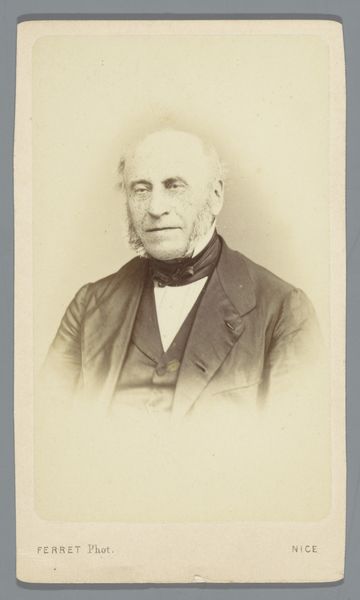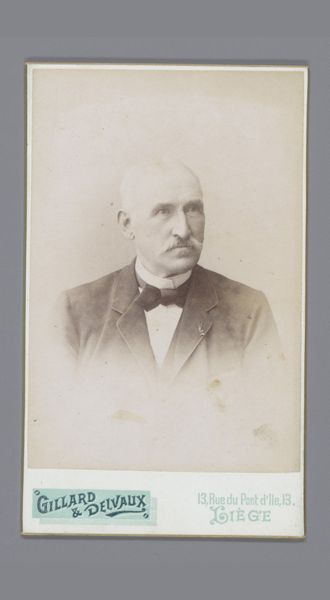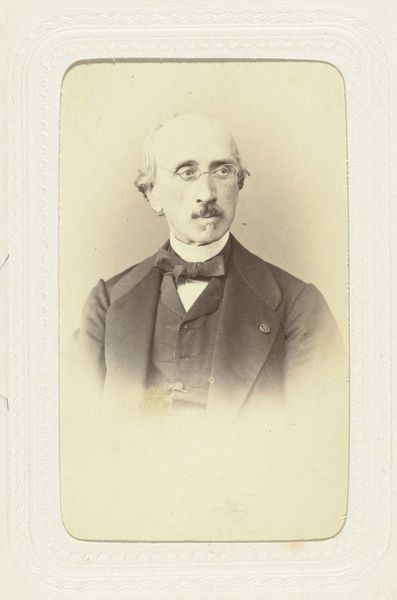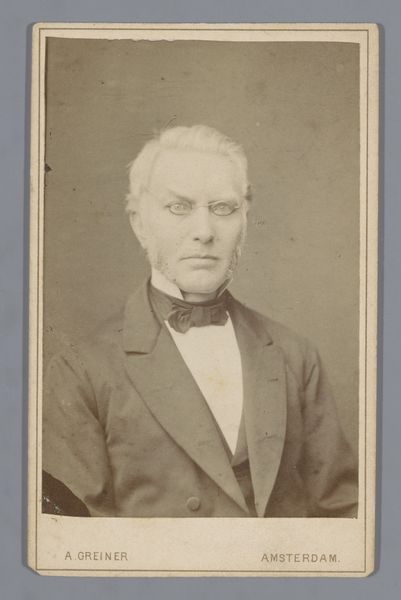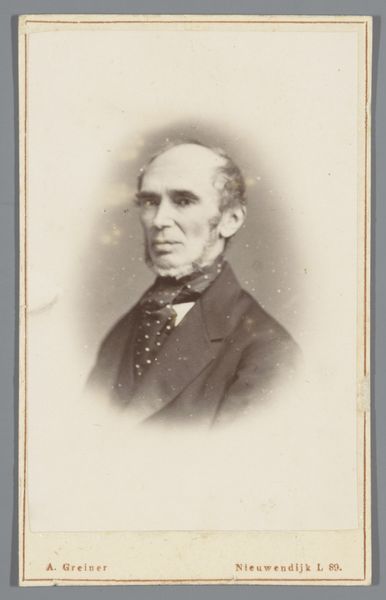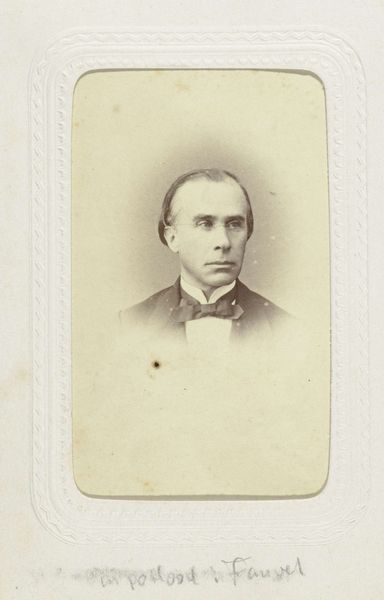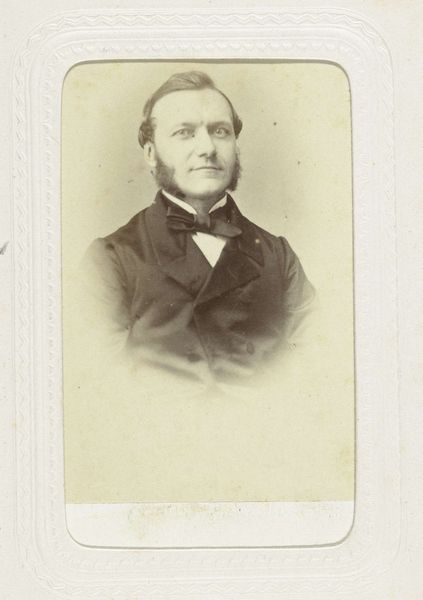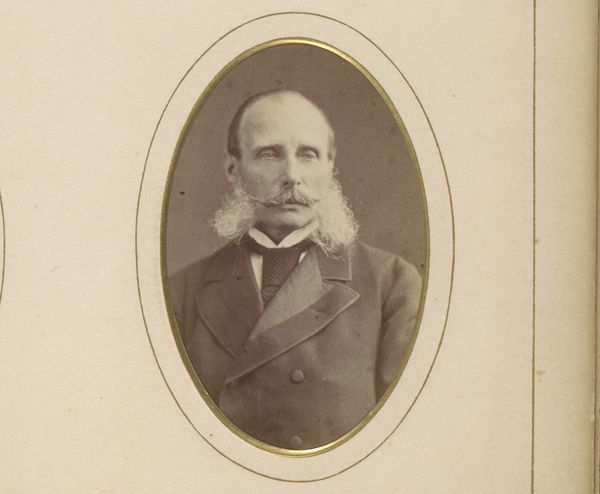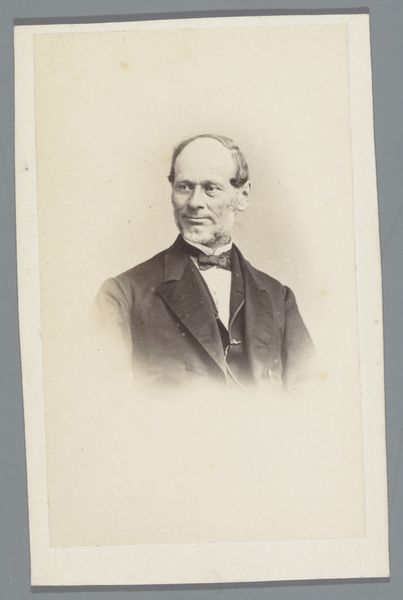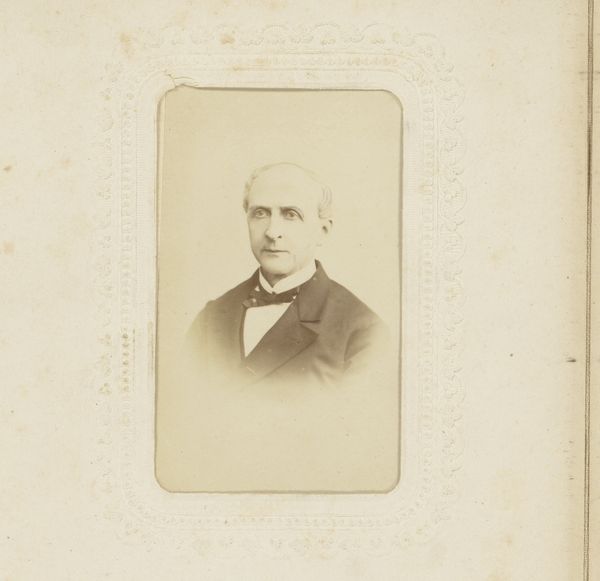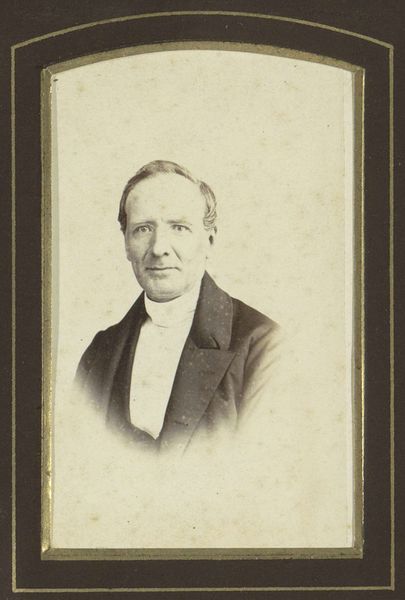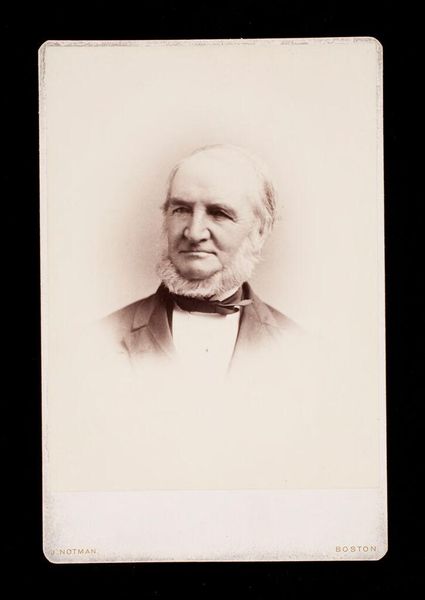
photography, gelatin-silver-print
#
portrait
#
caricature
#
photography
#
historical photography
#
portrait reference
#
gelatin-silver-print
#
realism
Dimensions: height 80 mm, width 54 mm, height 296 mm, width 225 mm
Copyright: Rijks Museum: Open Domain
Editor: This gelatin-silver print, titled "Studioportret van een man met grote bakkebaarden", or "Studio Portrait of a Man with Large Sideburns," was created around 1863-1866 by Abdullah Frères. It’s…very much of its time, isn't it? Stark, almost severe. What draws your eye when you look at this image? Curator: I’m immediately drawn to the material reality of this object. Think about the labour involved, both in front of and behind the camera. Someone had to pose, yes, but before that someone had to prepare the gelatin emulsion, coat the glass plate, carefully develop it... the studio was a little factory. Consider the access that such a costly, laborious process afforded. It's unlikely the sitter would be working-class; access to representation was highly skewed. Editor: That’s a good point. I hadn’t considered the labour so much, focusing more on the sitter and his clothes. So, photography was a marker of status, in and of itself? Curator: Precisely! And this card format-- carte-de-visite --further complicates that. The mass production of images becomes a tool for disseminating ideals, perpetuating class structures through the visual vocabulary of dress and pose. The studio itself, as a space of production, is completely obscured, isn't it? Yet, the finished object is testament to a complex system of exchange and representation. Editor: That is fascinating, viewing the whole photographic process as labour, rather than the finished product as…art, necessarily. Something about thinking this way demystifies it, and allows for deeper consideration of the time period. I’m not sure I'll look at photos quite the same way again. Curator: Exactly. Questioning the materials and processes allows us to move beyond a simple reading of the subject matter and toward an understanding of the complex socio-economic factors at play in the creation and consumption of art.
Comments
No comments
Be the first to comment and join the conversation on the ultimate creative platform.
